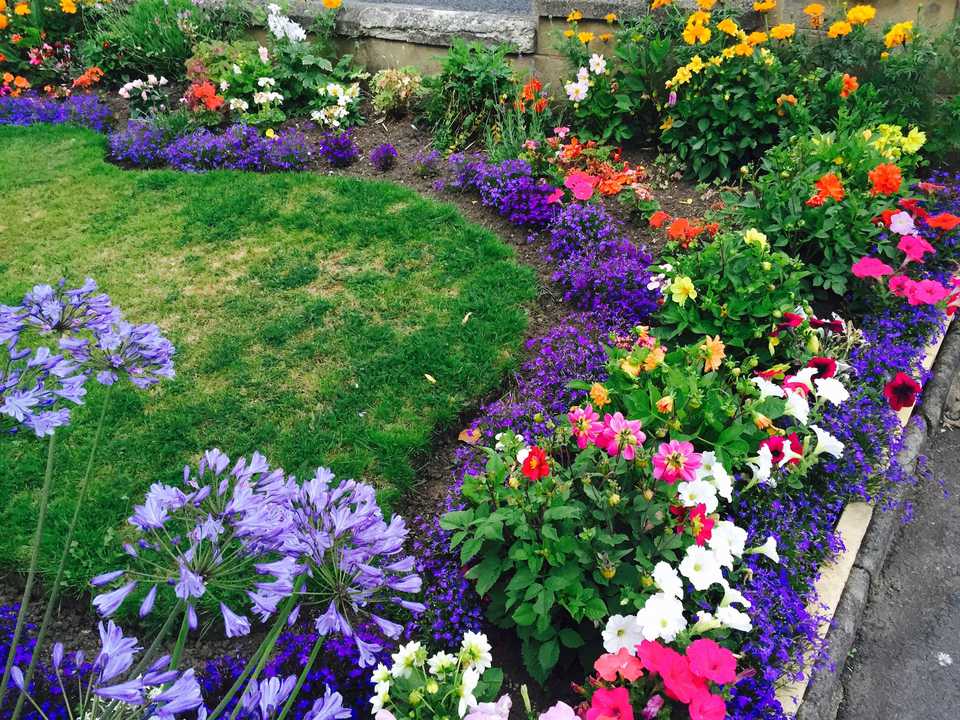Flower beds, fountains and hardscaping are all within reach — even without professional help.
“In a nutshell, what is the best way to go about beautifying my yard?” I am sometimes asked this rather broad question, and it’s a tough one to answer. There are so many variables in do-it-yourself landscaping, such as budget, skills, the climate of your region, your personal design tastes, how you’ll be using your yard, etc. But there are certain steps you can take that are so sound that they readily suggest themselves as answers to this question.
Here’s a can’t-miss tip for beautifying your yard: make sure you’re providing something of interest in each of the four seasons. Do-it-yourself landscaping for 4-season interest begins with a well-researched plant-selection plan. The goal is to have flowering trees and/or shrubs throughout spring and summer, fall foliage in autumn and good structure in winter. This article describes how to achieve that goal.
02 of 10
-
Layer your flower borders in 3 rows: a back row (facing north, preferably) with the tallest plants, a middle row with the next tallest, and a front row composed of your shortest plants. Use repetition, both in the planting bed and elsewhere in your yard, to provide unity
-
03 of 10
Do-it-yourself landscaping tip #1 above focuses on deciduous trees and shrubs. But don’t forget evergreens and other plants prized as much or more for their foliage as for their flowers. The deciduous specimens provide more color and variety, while the evergreens will provide continuity.
04 of 10Perennial flowers are wonderful for your planting beds, but they bloom for only so long. You may have perennials blooming in your bed in May, then nothing until July. Incorporating annuals into a do-it-yourself landscaping plan will “plug the gaps,” giving you continuous color in the yard. Use my picture gallery to find ideas for your color schemes. The gallery is preceded by an introduction to employing color in landscape design.
05 of 10Don’t restrict your do-it-yourself landscaping to plants. Include hardscape features, too. Like evergreens, they provide structure in winter and much more than that. Walls and fences make an essential design statement, as they frame your property. When I’m driving around the countryside, I’m constantly struck by how much more “finished” the properties with fences look. Decks and arbors are other important hardscape features. Patios and decks provide transitions from indoors to outdoors.


:max_bytes(150000):strip_icc()/Kings-Gold-falsecypress-big-56b6bd6c3df78c0b135b91e2.jpg)
:max_bytes(150000):strip_icc()/GettyImages-580771879-588ed1c83df78caebc98109f.jpg)
:max_bytes(150000):strip_icc()/GettyImages-128135138-588ed29f3df78caebc986815.jpg)
:max_bytes(150000):strip_icc()/GettyImages-121749624-588ed3525f9b5874eeb5b9a2.jpg)
:max_bytes(150000):strip_icc()/GettyImages-88621140-588ed4463df78caebc9971aa.jpg)